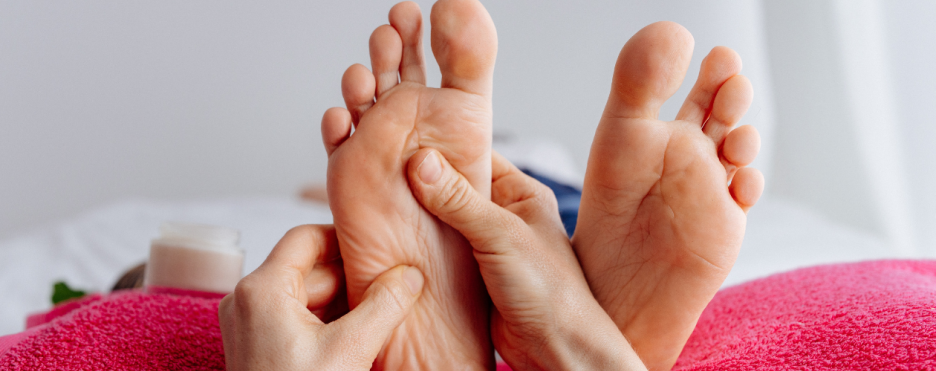Have you ever wondered what your feet reveal about your health?
My journey into reflexology began at 17, with a visit to a reflexologist who seemed to know so much about me just from my feet. When I asked how, she called it a ‘gift,’ and I honestly thought she had ‘psychic powers’!

Now, with my studies and many years of practice, I understand that these 'gifts' are actually learned skills. Reflexologists use specific, documented observations, refined through countless case histories, to gain deeper insight into a patient's health.
I've found many new patients, curious about reflexology, prefer that I identify their issues simply by examining their feet – and I completely understand the excitement of hearing someone articulate concerns you haven't even mentioned! However, as professional reflexologists, we deeply respect your privacy and never use these insights as mere 'party tricks.'
Why Do Reflexologists Ask for Your Case History?
If we can gain so much insight from your feet, why do we still ask about your health history?
While foot observations are incredibly powerful, therapeutic reflexologists use them to enhance your treatment. Our main goal is to address the primary reason you came to see us. Your case history helps us:
- Confirm and identify key problem areas and patterns.
- Understand the "why" behind what we're observing in your feet.
- Most importantly, develop a personalised treatment protocol so you get the maximum benefit from your session.
Of course, it's always fascinating when we identify something you might have forgotten to mention, often leading to curious questions about "how we knew that!"
What Does a Reflexologist Observe on Your Feet?
Once we’ve reviewed your case history, it’s time to examine your feet (and sometimes hands, face, or ears). Here’s what we might observe:
- Colour: Pale feet often suggest low energy, chronic illness, or anaemia. Some techniques, like the Vacuflex boot, intensify these observations: blue might indicate organ stress or acute pain; yellow, mucous or inflammation; white, chronic conditions; and red, inflammation or acidity.
- Temperature: Foot temperature can reveal circulatory quality and even temperament. Hot feet might indicate someone who is rushed or prone to anger, while cold feet could suggest a lack of confidence or a tendency not to complete tasks.
- Shape & Size: Beyond physiology, the size and shape of your feet can offer insights into your personality, attitude, and general approach to life.
- Texture: Dry skin often signals dehydration, digestive issues, or insufficient healthy fats. Puffy feet (oedema) could indicate water retention, dehydration, or circulatory/heart concerns.
- Abnormalities: We look for swollen areas, calluses, peeling skin, bunions, corns, or other skin hardness. A reflexologist considers where these abnormalities correspond on the reflex map and what they might signify. For example, a callus over the oesophagus reflex area could indicate ongoing irritation or strain related to heartburn/reflux.
- Nails: Your nails offer a fascinating story about your liver, kidney health, circulation, and heart well-being. (In fact, I wrote an entire article on nails as an assessment tool.
So, during your next reflexology session, feel free to ask questions! Don’t hesitate to ask what your feet reveal, why you might have dry skin, or what a specific callus or bunion could signify. It’s all part of understanding your body better.
Interested in diving deeper?
Ready to discover what your feet can tell you? Book your therapeutic reflexology session with Jasmine in Somerset West or Marina in Modderfontein today!

